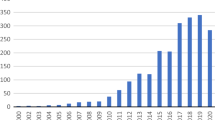Abstract
Background
With a record number of medical devices approved or cleared, it is important to understand the performance of devices once they are on the market. Using data from multiple medical devices and multiple sites, the problem of interest in this article is to detect if a device is a signal; that is, if a device performs significantly different from other devices of the same class, when the outcome of interest is a continuous variable.
Methods
We develop a normal likelihood ratio test (LRT) method, henceforth referred to as normal-LRT, by incorporating sample size information into the methodological framework, to detect device signals using multi-site and multi-device data.
Results
It is shown via extensive simulation that the proposed method controls the type-I error and false discovery rate (FDR), while having good power and sensitivity. This method is applied to a hypothetical case study, in which 6 medical devices of the same class are compared.
Discussion
The normal-LRT method can be considered as a tool for device signal detection using data from multi-site and multi-device when the outcome of interest is a continuous measurement.
Similar content being viewed by others
References
Kirisits A, Redekop WK. The economic evaluation of medical devices. Appl Health Econ Health Policy. 2013;11(1):15–26. https://doi.org/10.1007/s40258-012-0006-9.
Monsein LH. Primer on medical device regulation. Part I. History and background. Radiology. 1997;205(1):1–9.
Challoner DR, Senate US. Medical devices and the public’s health: the FDA 510 (k) clearance process at 35 years. Written Statement before the Committee on Health, Education, Labor, and Pensions US Senate, Institute of Medicine of the National Academics, Washington. 2011 Nov 15.
Palatini P, Frigo G, Bertolo O, Roman E, Da RC, Winnicki M. Validation of the A&D TM-2430 device for ambulatory blood pressure monitoring and evaluation of performance according to subjects' characteristics. Blood Press Monit. 1998;3(4):255–60.
Gross TM, Bode BW, Einhorn D, Kayne DM, Reed JH, White NH, Mastrototaro JJ. Performance evaluation of the MiniMed® continuous glucose monitoring system during patient home use. Diabetes Technol Ther. 2000;2(1):49–56.
Xu J, Huang L, Yao Z, Xu Z, Zalkikar J, Tiwari R. Statistical methods for clinical study site selection. Ther Innov Regul Sci. 2019;54:211. https://doi.org/10.1177/2168479018814474.
Huang L, Zalkikar J, Tiwari R. Likelihood-ratio-test methods for drug safety signal detection from multiple clinical datasets. Comput Math Methods Med. 2019;2019:1–11. https://doi.org/10.1155/2019/1526290.
Rothman KJ, Lanes S, Sacks ST. The reporting odds ratio and its advantages over the proportional reporting ratio. Pharmacoepidemiol Drug Saf. 2004;13(8):519–23. https://doi.org/10.1002/pds.1001.
Evans SJW, Waller PC, Davis S. Use of proportional reporting ratios (PRRs) for signal generation from spontaneous adverse drug reaction reports. Pharmacoepidemiol Drug Saf. 2001;10(6):483–6. https://doi.org/10.1002/pds.677.
Huang L, Zalkikar J, Tiwari RC. A likelihood ratio test based method for signal detection with application to FDA’s drug safety data. J Am Stat Assoc. 2011;106(496):1230–41. https://doi.org/10.1198/jasa.2011.ap10243.
Ding Y, Markatou M, Ball R. An evaluation of statistical approaches to postmarketing surveillance. Stat Med. 2020. https://doi.org/10.1002/sim.8447.
Dwass M. Modified randomization tests for nonparametric hypotheses. Ann Math Stat. 1957;28(1):181–7. https://doi.org/10.1214/aoms/1177707045.
Center for Devices and Radiological Health. Obesity Treatment Devices. U.S. Food and Drug Administration. https://www.fda.gov/medical-devices/products-and-medical-procedures/obesity-treatment-devices. Accessed 20 Apr 2019.
Acknowledgements
The authors would like to thank our colleague, Mike Mikailov, for his generous help with high performance computing.
Disclaimer
The views and opinions expressed in this article represent those of the authors, and do not necessarily represent those of the US Food and Drug Administration.
Funding
The author(s) received no financial support for the research, authorship, and/or publication of this article.
Author information
Authors and Affiliations
Corresponding author
Ethics declarations
Conflict of interest
The author(s) declared no potential conflicts of interest with respect to the research, authorship, and/or publication of this article.
Statement on Human and Animal Rights
This article does not contain any studies with human or animal subjects performed by any of the authors.
Additional information
Publisher's Note
Springer Nature remains neutral with regard to jurisdictional claims in published maps and institutional affiliations.
Electronic supplementary material
Below is the link to the electronic supplementary material.
Rights and permissions
About this article
Cite this article
Hu, T., Xu, J., Huang, L. et al. Likelihood Ratio Test Method for Multiple Medical Devices Comparison Using Multiple-Site Data with Continuous Outcomes. Ther Innov Regul Sci 54, 1444–1452 (2020). https://doi.org/10.1007/s43441-020-00171-x
Received:
Accepted:
Published:
Issue Date:
DOI: https://doi.org/10.1007/s43441-020-00171-x




